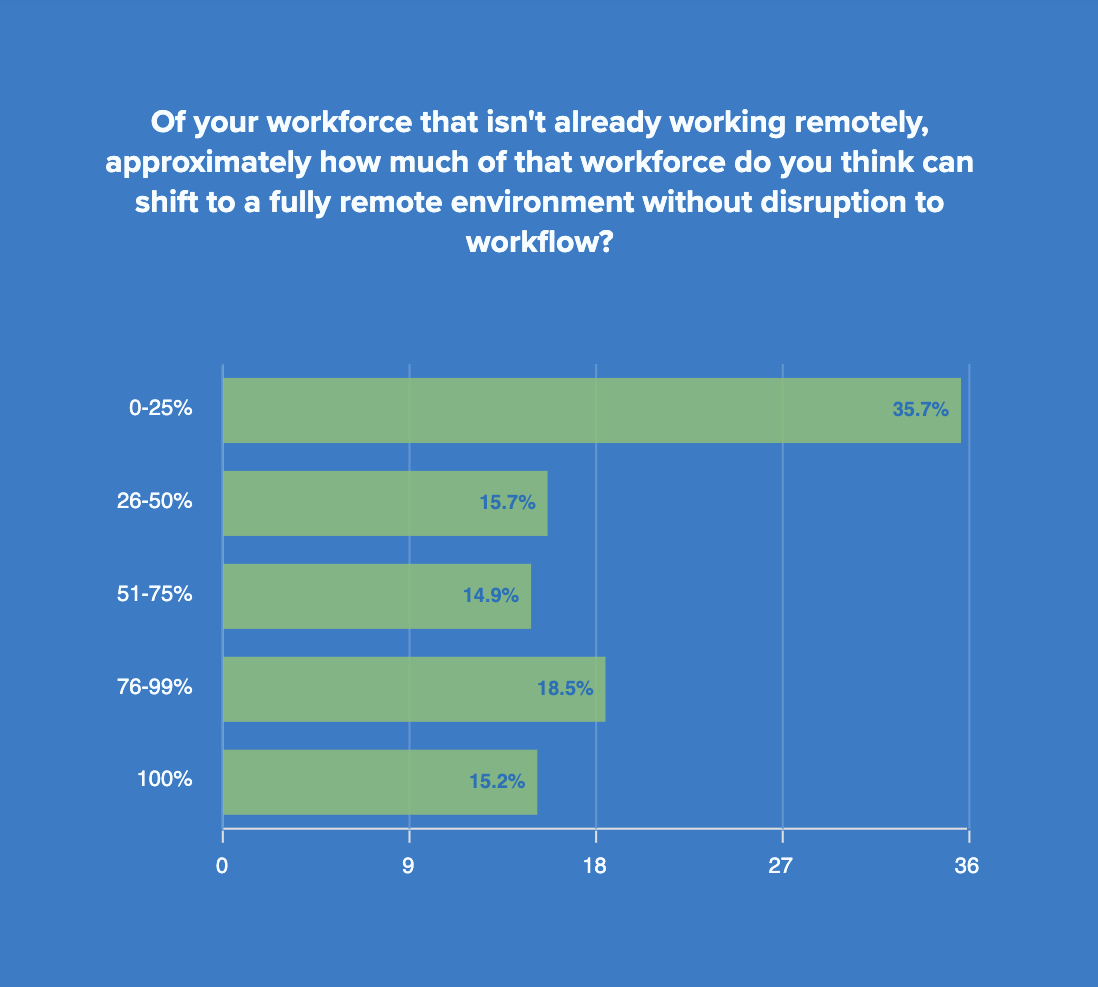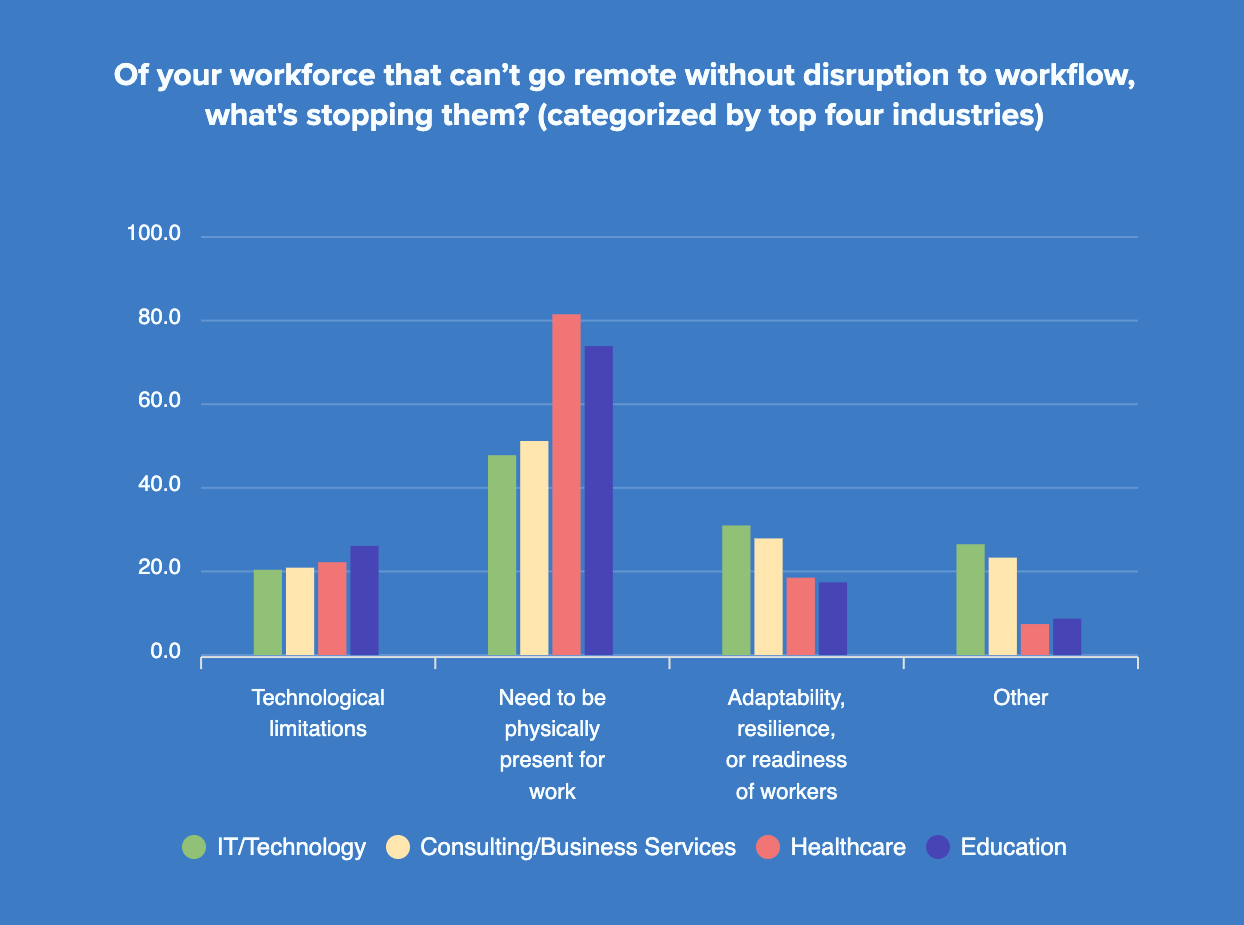Challenges of remote work: the tech shall overcome
This is the third in a series of excerpts from our New World of Work survey report which was published in August 2020. More than 350 respondents filled out the 30-question survey, resulting in numerous compelling insights both for business and recruitment interests. Here, we learn about the feasibility and the challenges of remote work – and the whys for both.

In this chapter, we address the following questions:
- How much can companies go remote?
- Why can’t some employees go remote?
- Why can some employees go remote?
- Which industries are good for remote work?
- Which industries aren’t good for remote work?
- What helps employees succeed in a remote workplace?
We’ve established remote work as the number-one disruption going forward. But what will that new remote work world look like, and how feasible is it? We asked those questions in our survey as well.
Shift to remote is doable – to a degree
Two thirds of respondents (64.3%) reported that, of their workforce not already working remote, more than a quarter can move to a virtual environment without disruption. And 15.2% said they’d be able to move their entire workforce to remote.
But that’s just one side of the same coin. The other side is that more than a third (35.7%) of respondents can only move at most one quarter of their current non-remote workforce to a virtual environment without disruption. In other words, a full three quarters or more of their workforce cannot go virtual.
So, what’s stopping them? We asked that, too.
Challenges of remote work
Predictably, the need to be physically present for work is a dominant challenge in shifting to a remote-first environment, particularly for those in healthcare (81.5%) and education (73.9%). Yet, those same sectors didn’t consider adaptability, resilience, and readiness of workers to be a major issue when transitioning to remote-first.
“There is still value in being present. We are a route-based business and some staff must still report to the physical location. We want to avoid creating a disparity between job roles.” – Survey respondent
In the “Other” category, respondents cited logistics, the value of physically being in the same space, and lack of management buy-in as leading factors in the challenges of remote working.
When asked about what does enable them to go remote, a full 69.6% of education workers said they didn’t need to be physically present at work, tops across our four major sectors, while at the same time trailing all other sectors in terms of technological readiness.
One could dive deeper into the “why” of this, but one potential takeaway is that those in education feel they can work remotely if they have the technology to do so. There are myriad reasons for not having the technology, for instance, a digital divide among students, budgetary challenges, or lack of buy-in or support from key stakeholders and users.
What we do know is that many major schools from K-12 to college/university – including in California and at Harvard – are moving to a digital-first curriculum and may even remain so for the foreseeable future. Technology has enabled that to happen.
Perhaps that technology component marks a permanent shift and a major change in a sector that traditionally has required physical presence. We may see similar trends in other sectors.
So – the paradigm shift continues to be remote, and technology helps that shift to happen – but some sectors are not as ready as others.
Want to learn more? Navigate to:
- Chapter 1 on the impact that COVID-19 had on business and processes
- Chapter 2 on the magnitude of the shift to remote work
- Chapter 4 on the challenges of remote hiring and why
- Chapter 5 on the role of technology in remote work going forward
- Methodology and firmographics
- A collection of open-ended responses from those we surveyed.







